Amazon is responsible for nearly a third of all online retail sales, and 82% of all sales on Amazon happen through its Buy Box. If your product offer is not in the Buy Box, it becomes more difficult for a customer to make a purchase.
In this detailed guide, you will learn the following:
- What is the Amazon Buy Box?
- Why the Amazon Buy Box is important
- Amazon Buy Box requirements and how to become eligible for it
- How to win the Amazon Buy Box
We’ll answer all of those questions and more.
What is the Amazon Buy Box?
The moment a buyer lands on an Amazon product listing, they are presented with a lot of important information:
- On the far left, they can view the product’s images.
- At the center of the listing, the product’s title, number of ratings, variants, and a few bullet point descriptions are displayed.
- Finally, and most importantly, the Buy Box is on the far right.
As for the Buy Box, it is a widget visible on most Amazon product listing pages that allows a shopper to quickly purchase products they are searching for.
It enables shoppers to select the way in which they will purchase the product (used, new, shipping speeds, and gift options are all options on the listing below). Customers can also adjust the number of items they’re buying, and then, once they are done choosing their variables, prepare for checkout by clicking the ‘Add to Cart’ button.
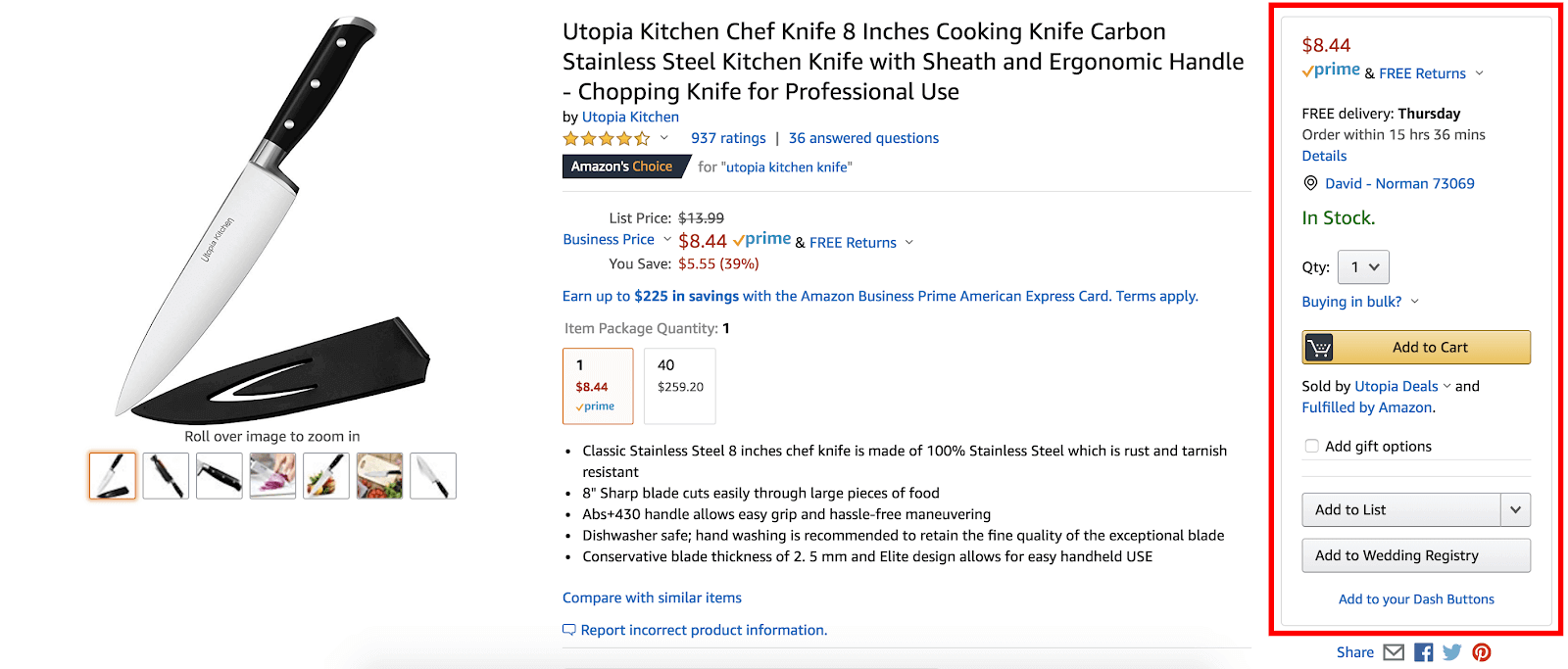
After clicking the yellow “Proceed to checkout” button, the Buy Box directs the customer to the checkout page.

Ultimately, the Buy Box facilitates a low-friction sale on Amazon by enabling shoppers to make their purchase quickly and easily, within just two or three steps.
But, what most consumers don’t realize is that the Buy Box is separate from the listing itself and sellers compete for ownership of the widget.
Why is the Buy Box important for Amazon sellers?
There are two main reasons why you should be concerned about the Buy Box.
1. Owning the Buy Box increases your chances of making a sale.
Nearly all Amazon purchases are made through the Buy Box, as it is the first ‘call to action’ shoppers see.
However, even though the Buy Box gives information on who is selling and fulfilling the product, it’s unlikely that these factor into a customer’s decision to buy.
The convenience of the Buy Box’s placement is often enough to generate a sale.
2. If you own the Buy Box, you can create Amazon PPC ads.
Amazon PPC (pay-per-click) allows sellers to bid on prices of clicks for certain keywords, and sellers who control the Buy Box can create sponsored listings for the product through Amazon PPC.
But, if you do not own the Buy Box — even if it is on your own listing — you can’t create ads for the product.
How to become eligible for the Amazon Buy Box
In order for a seller to be eligible for the Buy Box, they must have a Professional Seller Account. Individual sellers are not eligible for the Buy Box. Also, the seller’s Account Health must remain in good standing.
Typically, a healthy account is one that has good customer service performance, follows Amazon’s product policy compliance, and has excellent shipping performance.
To check your Account Health, log on to your Seller Central account, and click on Performance > Account Health.
How do I know if my products are eligible for the Buy Box?
If you’re unsure about your control over the Buy Box for a certain listing, Amazon offers two free tools that let you check your eligibility.
In Seller Central, go to Inventory > Manage Inventory. On your products listings, you will see two columns: Buy Box Price and Buy Box Eligibility.
If these columns don’t appear, click on the gray Preferences button above your products on the right. Then click the two columns so that they become visible on your dashboard.

The image above shows that all of my products are eligible for the Buy Box. It also shows the current Buy Box prices for each of the items.
If my prices differed from the current Buy Box prices, I could immediately adjust them via the Price column on the Manage Inventory page, increasing my chances of winning the Buy Boxes from their present owners.
Next, if you go to the top of your Seller Central page to the search bar and type “Buy Box,” the Help window slides out from the right.
Immediately, it offers a tool that allows you to check Buy Box availability for certain ASINs and SKUs.
How long does it take to become eligible for the Buy Box on Amazon?
No time at all! As long as you meet the requirements and there isn’t a lot of competition, you can win the Buy Box.
But if you have competitors with matching prices and all other things are equal, you and the other sellers, at the very minimum, should qualify equally for the Buy Box.
When this occurs, Amazon will randomly determine who wins the Buy Box with each impression.
5 ways to win the Buy Box on Amazon
Even if you meet the minimum requirements for Buy Box eligibility, you still may not “win” or “control” the Buy Box right away — especially if there are other sellers on the same listing.
And though Amazon doesn’t explicitly state the factors its algorithm considers when assigning the Buy Box to sellers, these are the suspected considerations in order of importance:
1. Sell products in a new condition
Typically, the seller who wins the Buy Box will offer a new version of the product. Only in rare circumstances will sellers making “Used condition” offers to win the Buy Box over those with “New condition” offers.
2. Offer competitive pricing
Amazon equates low prices with happy customers. And according to Amazon, by listing your product within 5% of the current Buy Box price, you increase your chances of winning the Buy Box. It’s worth noting that often the Buy Box price is the lowest possible price for a given product.
3. List as a Prime seller
Although a non-Prime seller can qualify to win the Buy Box, Amazon gives priority to its Prime sellers. Sellers who use fulfilled-by-Amazon (FBA) automatically qualify for Prime, though merchants who fulfill their own products can also qualify for Prime.
4. Keep strong inventory levels
If you offer a product but are low in stock, your sales may not reach certain customers in time. Therefore, Amazon may give the Buy Box to sellers with a large inventory.
5. Maintain positive seller feedback
Although it isn’t entirely clear how Amazon’s algorithm weighs seller feedback when awarding its Buy Box, it is assumed that sellers with poor performance metrics have less of a chance of winning the Buy Box than those with positive metrics.
How do you purchase from someone other than the Buy Box owner?
Most products have multiple sellers — even if the Buy Box appears to recommend just one. So, it is possible for a shopper to change the seller they wish to purchase from.
There are at least two ways to do this.
- First, a shopper can click the grayed-out ‘Buy used’ radio button at the bottom of the Buy Box. When the shopper does this, they are provided information about the used seller who has been assigned the Buy Box.
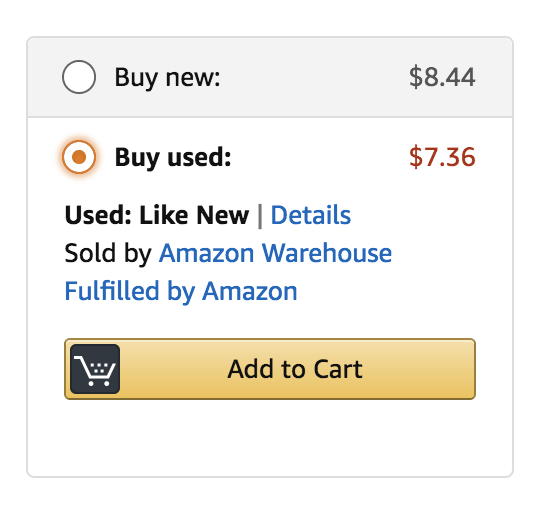
In the case above, the seller is Amazon Warehouse. And clicking the ‘Add to Cart’ button here follows the same process as before, with the exception that now the buyer would be purchasing the product in a used condition from a different seller (Amazon Warehouse vs. Uptopia Kitchen).
- The second way for a shopper to change the seller of the product is to scroll down the page to the additional offers line (outlined in red on the image below), directly below the listing’s bullet points.

Once you click that link, you are given additional options to make your purchase on Amazon. A similar link can be found below the gray ‘Add to List’ button on the right-hand side.
In the following example, we can see that there are 56 different sellers selling the same product.
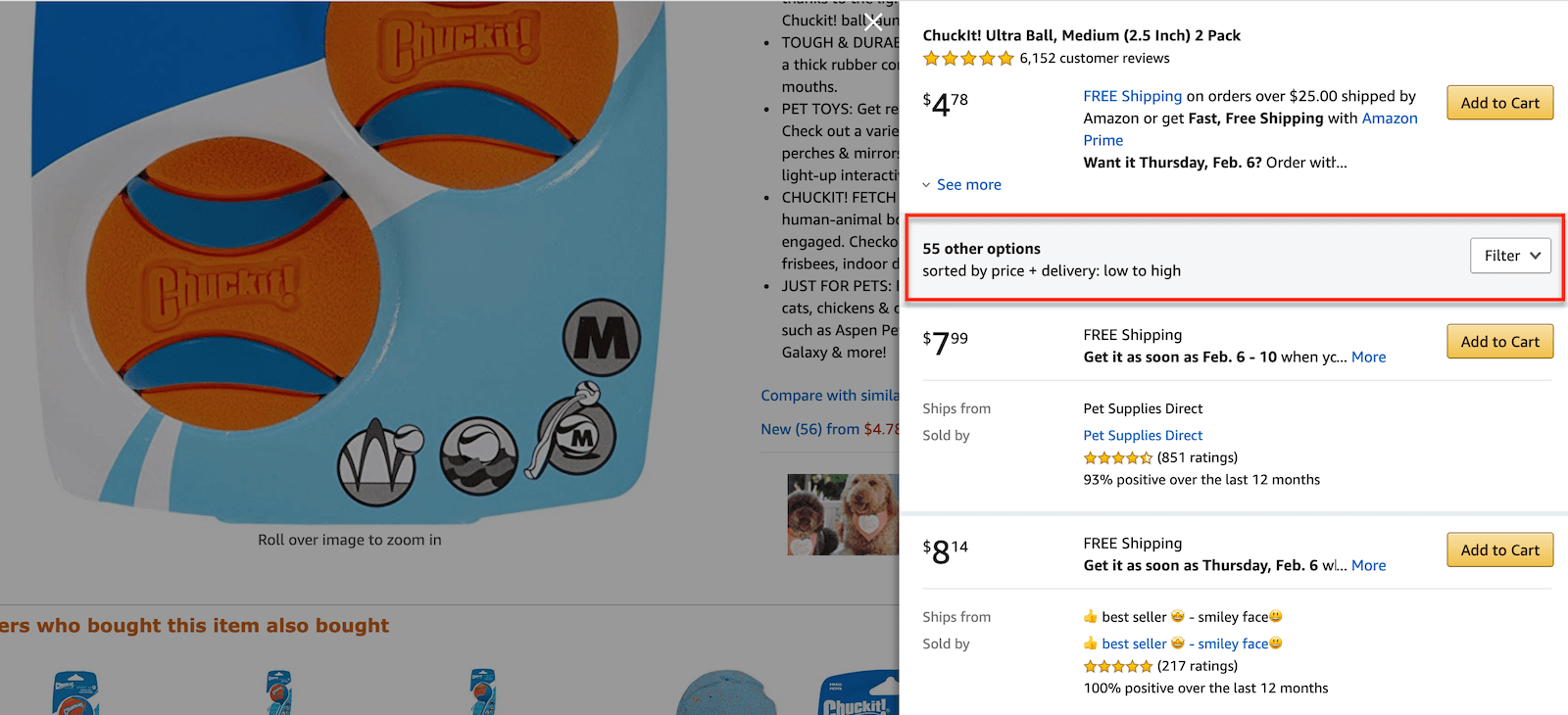
Typically, sellers are placed in ascending order by price. But, on the left hand of the seller options page, shoppers can filter sellers by shipping method and condition of the product.
Does every product on Amazon have a Buy Box?
No. While most products a shopper sees on Amazon will have a Buy Box, there are a few instances in which a product listing may not have that coveted widget.
For example, if the only seller (or sellers) offering a product on Amazon does not qualify for the Buy Box, the Buy Box will not appear.
Also, the Buy Box may not appear if all of the sellers on the listing have listed their versions of the product at a price that is much higher (or lower) than the average sales price for the product.
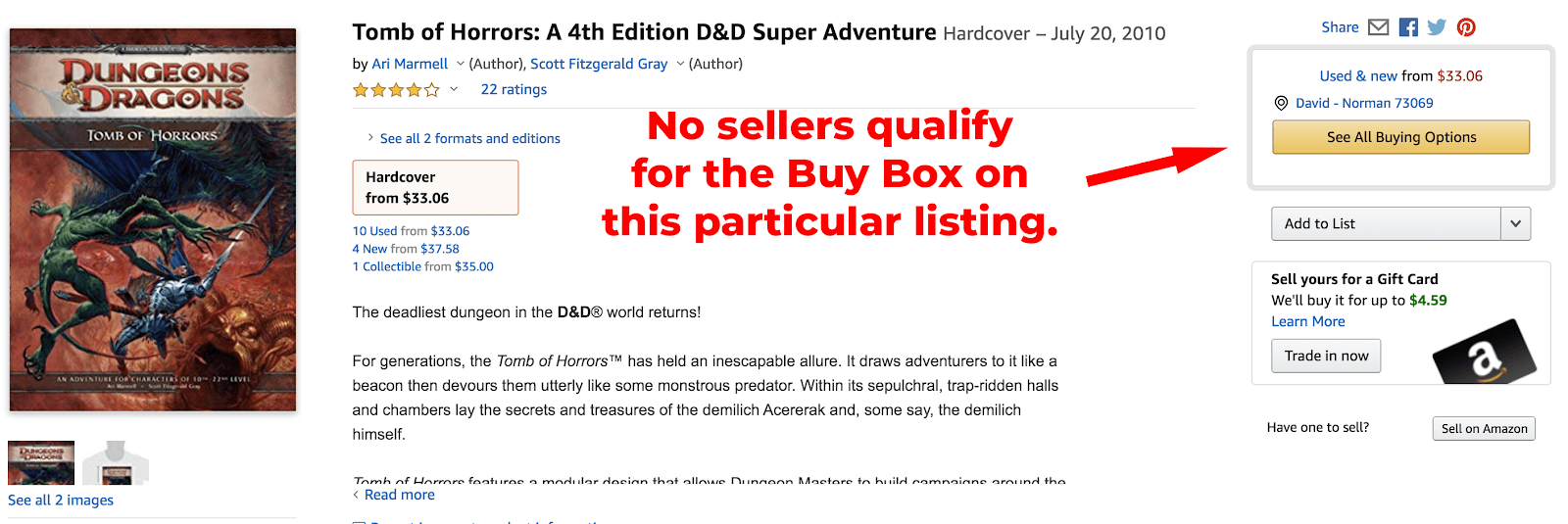
In the example above, in place of the Buy Box — which would have the option to ‘Add to Cart’ — the listing offers a box with an option to ‘See All Buying Options.’
Clicking this button redirects the shopper to the ‘Additional Sellers’ page, just as if we’d scrolled down and clicked the additional options line.
This is particularly common in collectible products and used books in which one or two sellers have no competition.
Because the supply for such products is limited, market prices are controlled by a finite number of sellers. Potentially, sellers who control the market price for a listing could increase it to exceptionally high prices.
When that happens, Amazon protects its shoppers by removing the Buy Box altogether so they can make better-informed decisions.
Does Amazon always win the Buy Box?
What if Amazon is on a listing with other sellers? Do they always win the Buy Box? Usually, yes.
But this is not because they’ve given themselves an unfair advantage. Often, Amazon will offer its own products at the lowest possible prices, thus, winning the Buy Box by the same rules as every other seller.
In the rare instances where Amazon doesn’t offer the lowest possible price, they, too, may lose the Buy Box.
3 Ways to Lose the Buy Box on Amazon
While it’s important to understand what it takes to win the Buy Box, it’s also important to understand that you can lose the Buy Box, too.
There are a few ways this can happen.
1. Another seller joins your listing
If another seller joins your listing and lists the product at a lower price, they can win the Buy Box.
In some cases, this is referred to as ‘hijacking,’ especially if the listing was a private label product of your own creation. By setting their price lower than yours, Amazon’s algorithm awards the new seller the Buy Box.
2. Your price is too high or too low
If your price is too high or too low in comparison to the average price, you might lose the Buy Box, even if you’re the only seller on the listing.
This prevents sellers from offering their product at a significantly reduced starting price in order to garner early sales and reviews, and then increasing the price once the product gains visibility.
Tip: If you plan to launch a product at a lower price than what you anticipate selling it at in the future, consider using Amazon’s coupons and promotions to reduce the price for the consumer instead of manually adjusting the product price. This will protect you from losing your own Buy Box.
3. Your account health takes a dip
Finally, if your Account Health falls below certain thresholds, Amazon may also remove your Buy Box privileges.
Furthermore, if your seller privileges are suspended or one of your ASINs is suppressed, you will lose the Buy Box.
How can I know whether or not I’m winning the Buy Box?
In addition to checking eligibility for your Buy Box products, Amazon offers insights into how often you’re winning the Buy Box as well.
When you first log on to Seller Central, at the top of the Dashboard and just below the menu, there are five metrics.
At the far right is a metric that lets you see your 2-Day Buy Box percentage.

Clicking on the box opens it up so you can see your Buy Box standing in each market that you sell in. It also gives you data for your Buy Box standing for the last 30 days.
Next, if you click on any of the percentages, it redirects you to your Pricing Dashboard. You can also access the Pricing Dashboard by going to Pricing > Dashboard on your Seller Central menu.
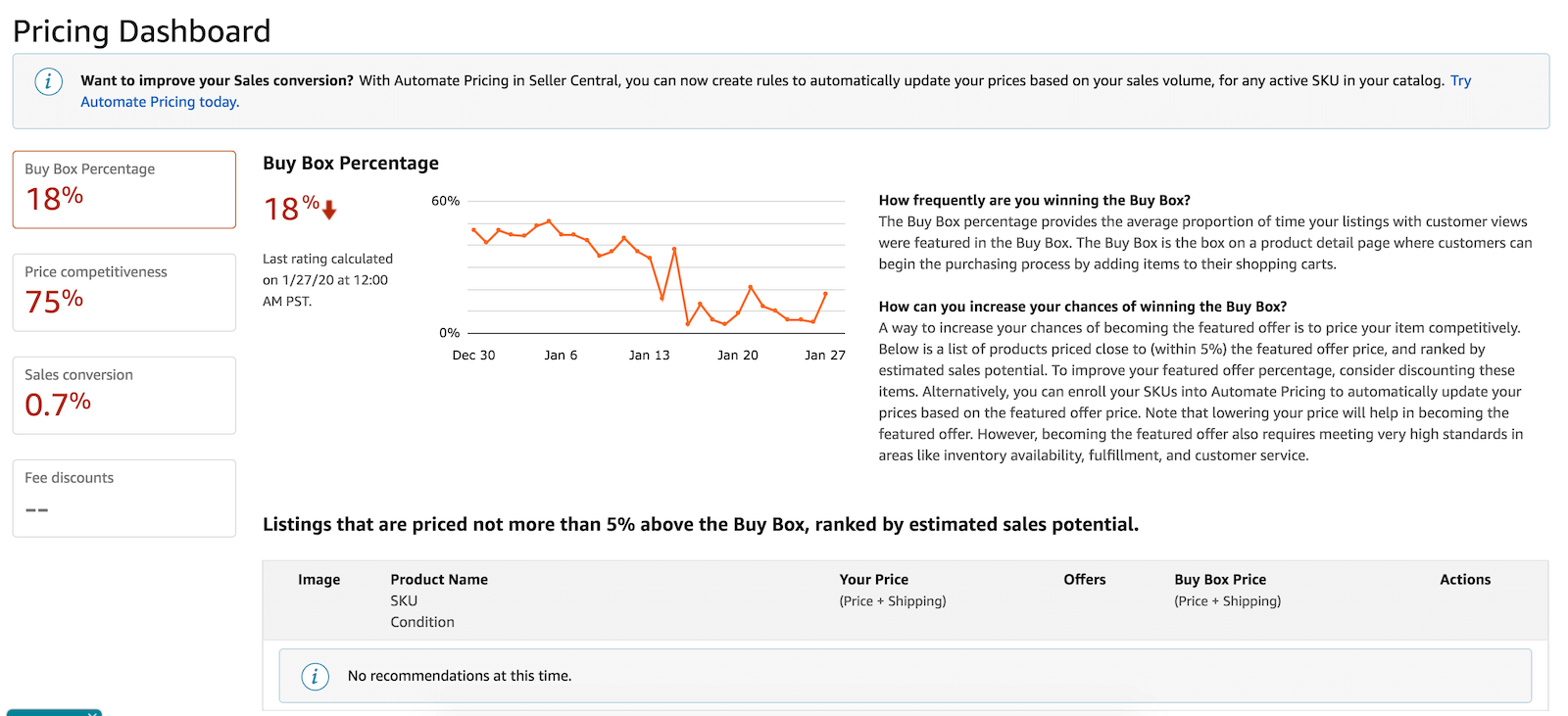
Right away, the Pricing Dashboard shows you your Buy Box Percentage. This is calculated by dividing the number of times you won the Buy Box by the number of views the page had overall.
For example, if 5,000 people visited your listing and you won the Buy Box 1,000 times, then your Buy Box percentage would be 20%.
Ideally, you want your percentage to be 100% to ensure the highest number of sales.
Once you know your Buy Box percentage, you can view your Price Competitiveness, which is the portion of items you are currently offering that are priced within 10% of the Buy Box price.
If you have any products not priced within 10% of the Buy Box price, Amazon will list the products for you here in your Pricing Dashboard and allow you to make immediate adjustments.
How can I track my Buy Box?
Of course, tracking the Buy Box all the time can be difficult. After all, Amazon’s customers are viewing your product listings 24/7.
Fortunately, there are a few ways to automate the process to ensure that you control the Buy Box.
Amazon’s Automate Pricing tool
First, Amazon has an “Automate Pricing” tool that reprices your products automatically if and when they differ from the current Buy Box price—ie, another seller lists the product for less than your offer.
To access the ‘Automate Pricing’ tool go to your Seller Central and click Pricing > Automate Pricing.
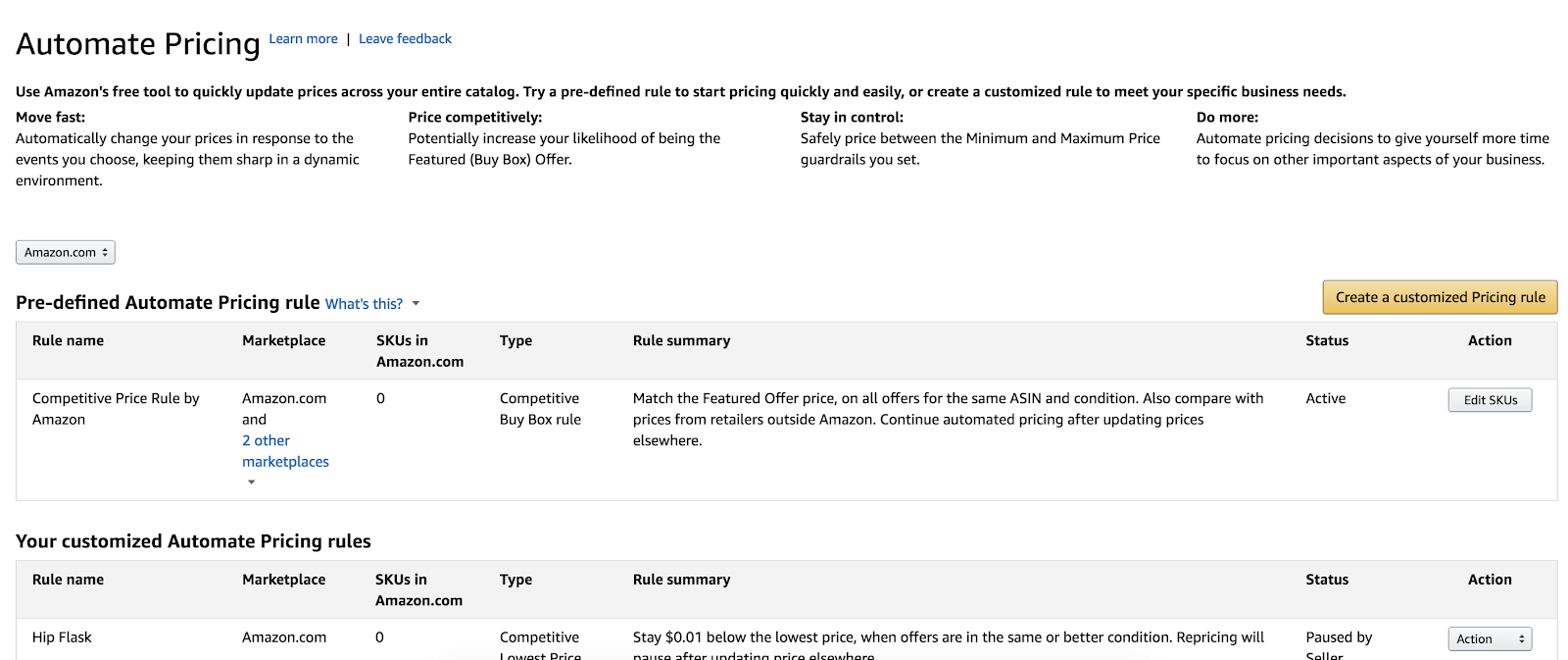
To create a new rule for repricing, click on the yellow ‘Create a customized Pricing rule’ button at the far right.
Next, choose the type of pricing rule you wish to enact and give it a name.
The name can be anything you want, as long as it helps you remember the purpose of the new pricing rule.
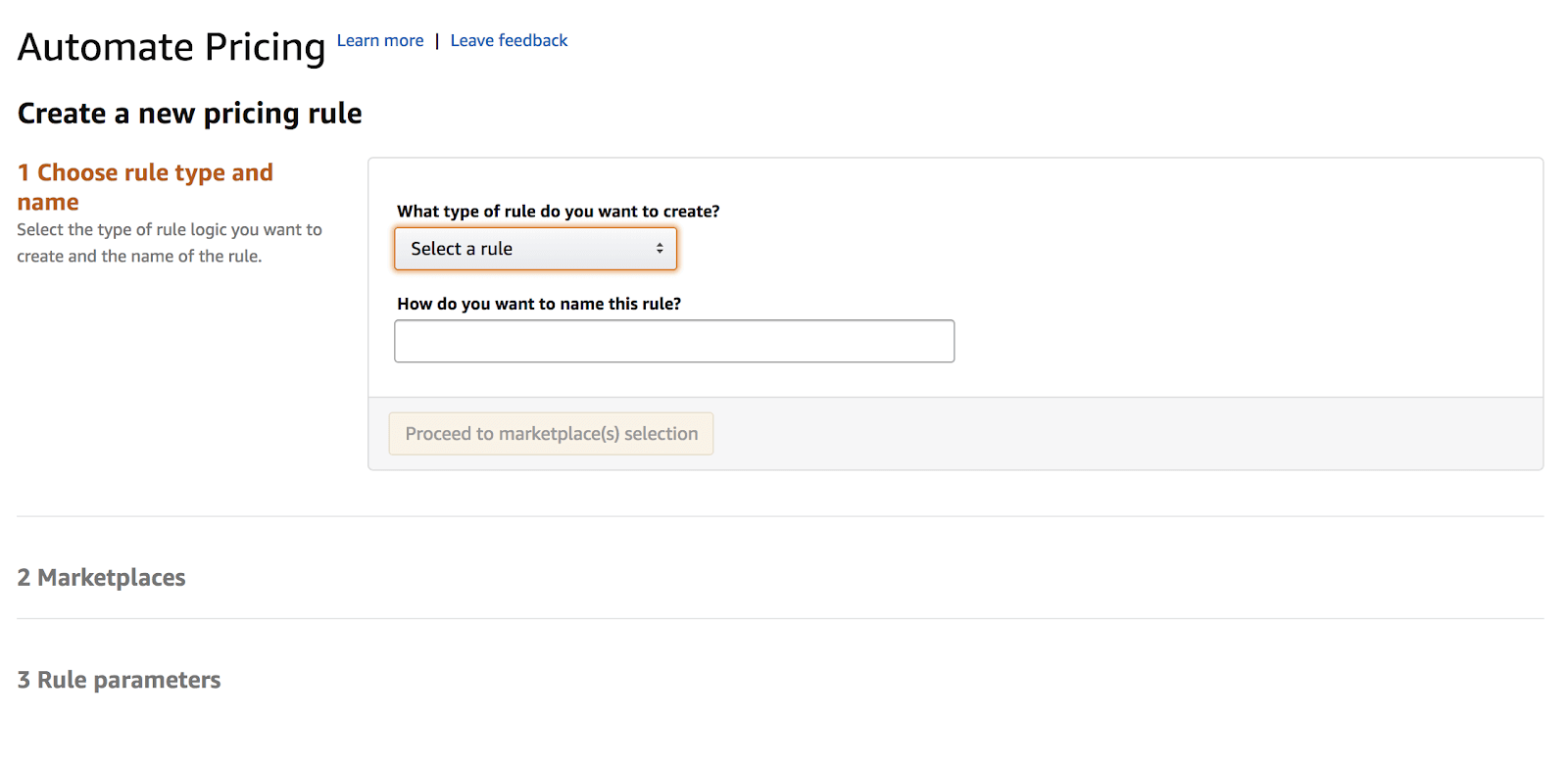
There are five types of pricing rules you can choose from.
- Competitive Buy Box. This rule changes the price of your offer above, at, or below the current Buy Box offer. This is useful when there are multiple offers on the same product listing.
- Competitive Lowest Price. If you want to offer the lowest possible price, you can set a rule to price your offer below the other listings, regardless of their Buy Box status.
- Competitive External Price. You can set your offer to reprice based on non-Amazon prices. However, this may cause you to lose the Buy Box if your price is a lot higher than the current Buy Box price.
- Based on sales units. If you wish to reduce the price for a certain number of units, you can create a rule for that. This is useful for liquidating your excess products or short-term sales promotions.
- Price synchronization. Business sellers have multiple tiers for their listings. If you wish to have the prices for all your tiers adjusted in relation to the standard price for your business product listing, use this rule.
After you’ve chosen your rule type, select the marketplaces in which you wish to use the rule.
Finally, set the parameters for your listing.
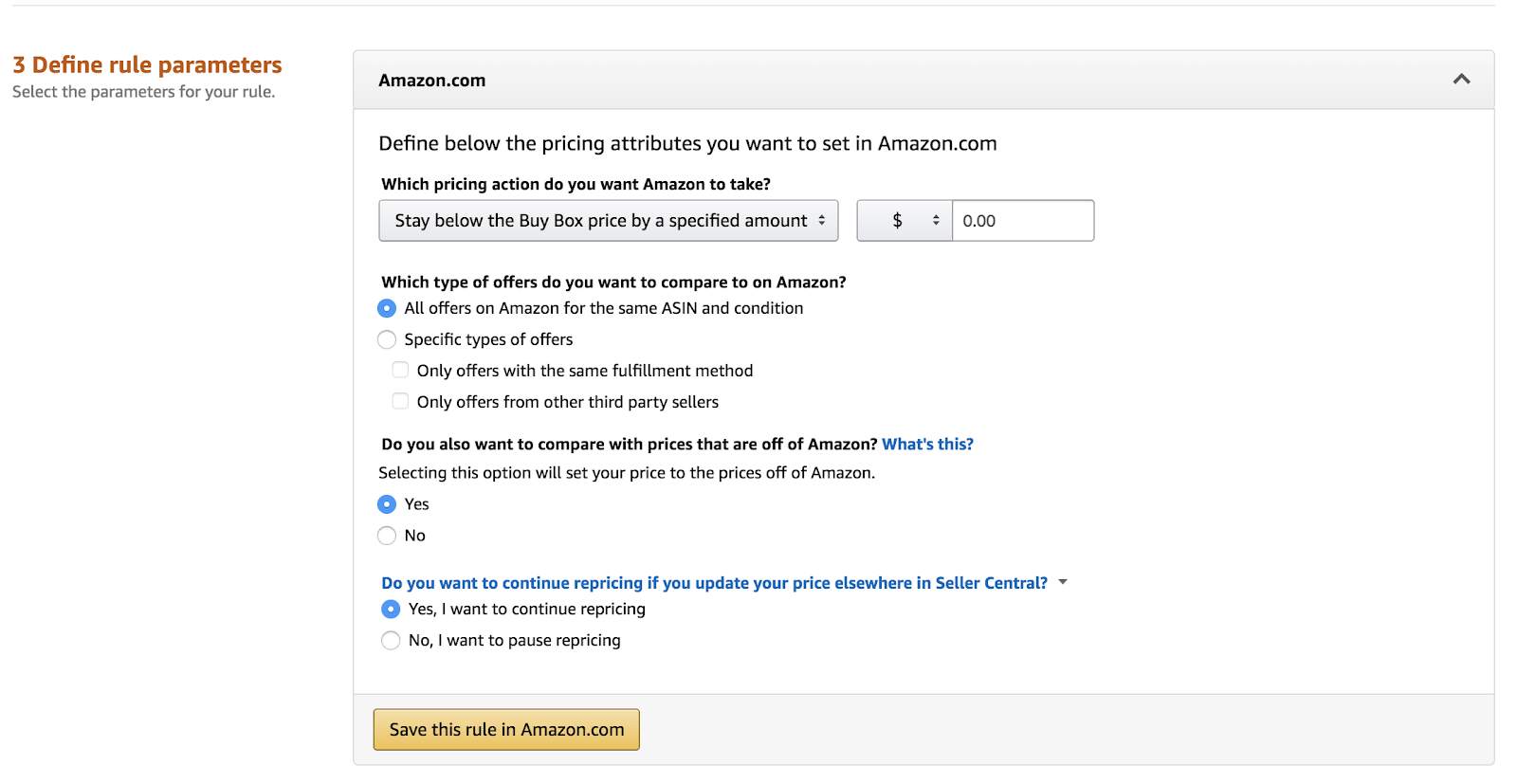
The specifics of your parameters will depend on the type of rule you chose.
In the above image, I chose ‘Competitive Buy Box’ as my rule. From there, Amazon asks me:
- Which pricing action I want to take;
- The type of offers I want to compare on Amazon;
- Whether or not I want to compare my prices to off-Amazon offers;
- And whether or not I want to continue repricing if I update my price elsewhere in Seller Central (such as Inventory Manager).
Jungle Scout Alerts
The next way to stay on top of your products’ Buy Box ownership is with Jungle Scout’s Alerts feature.
To access Alerts, login to Jungle Scout. Once you are logged in, click the bell icon at the top of your dashboard.
Next, click ‘Alerts Settings’ in the top right corner, which should allow you to see your ‘Alert Settings’ dashboard.
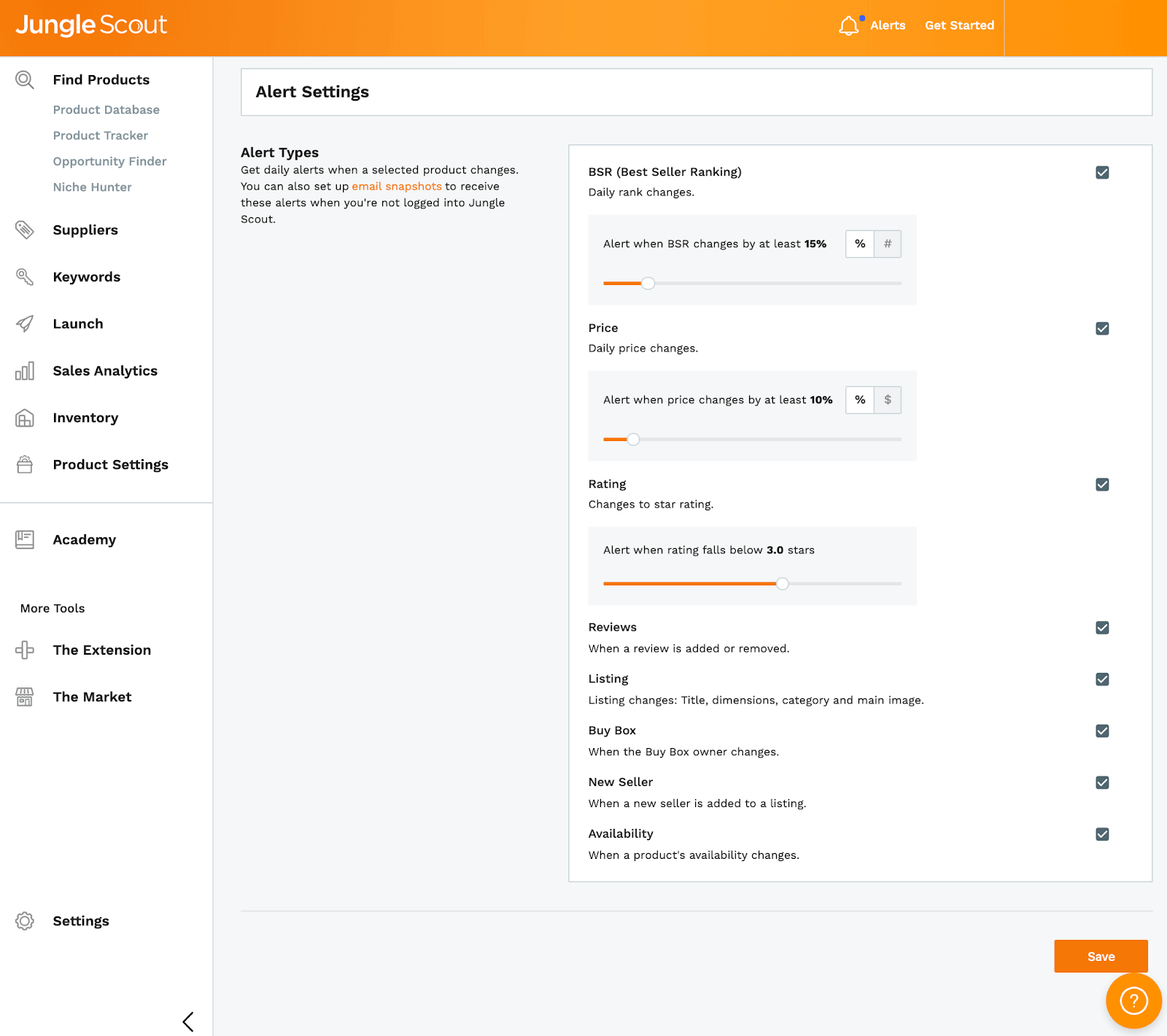
Once you’ve created alerts for your Jungle Scout account, you will receive daily notifications on your Jungle Scout Alerts Dashboard.
Optionally, you can also have notifications sent to your email.
By setting the price and Buy Box settings in your Alerts, you can keep track of when your status as the Buy Box seller changes.
Do you have any other tips on how to win the Buy Box, or how to avoid losing it? If yes, please share them in the comments below. We’d love to hear from you!
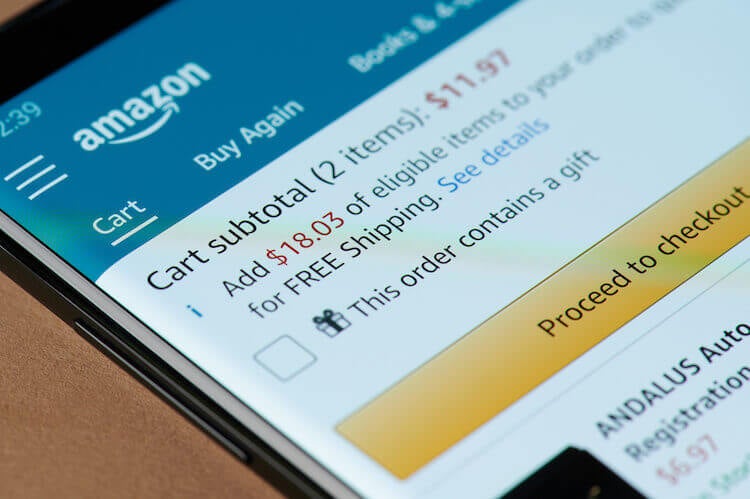
 27 Comments
27 Comments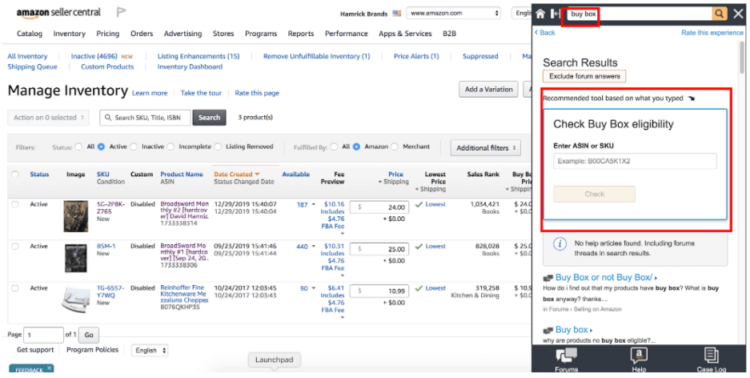
27 comments on “How to Win the Amazon Buy Box in 2021”